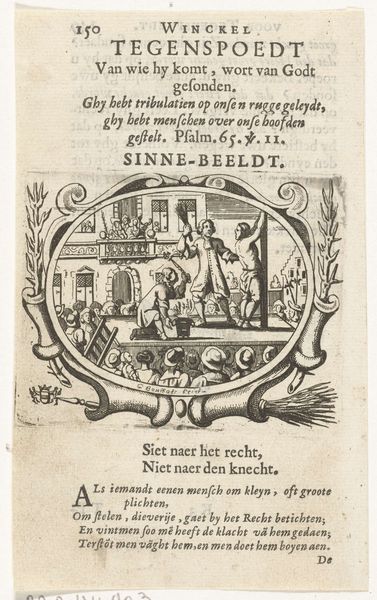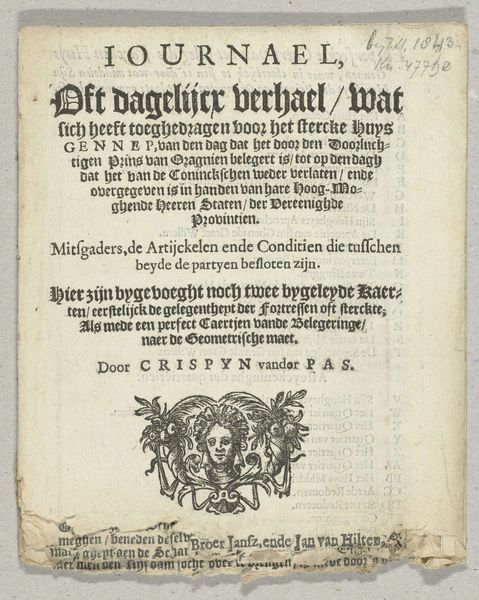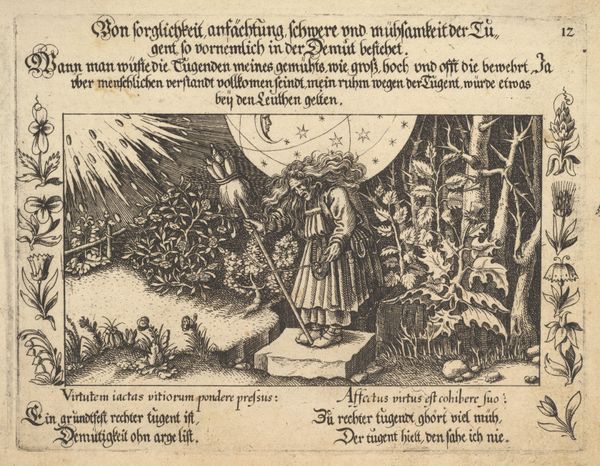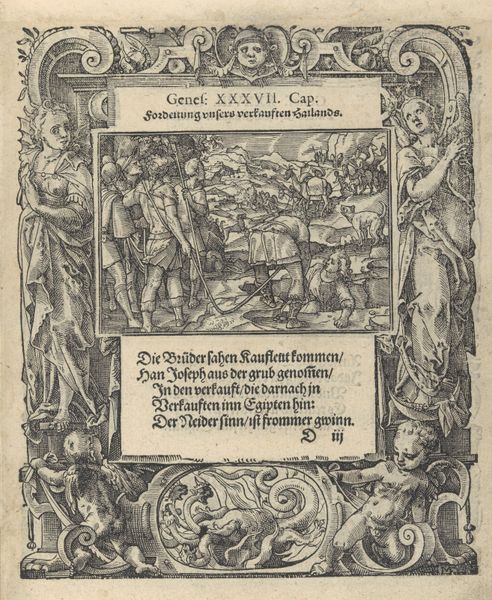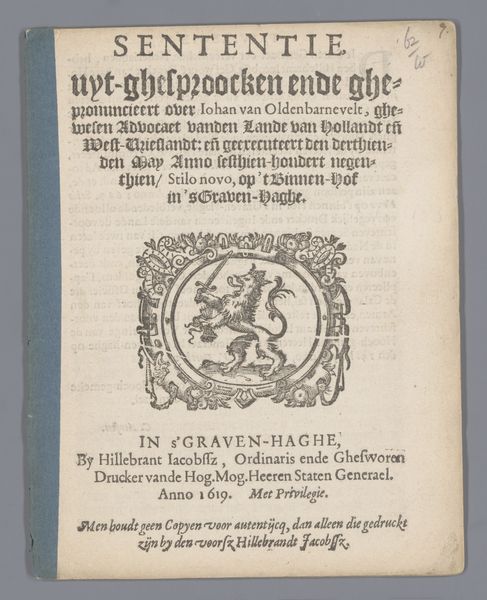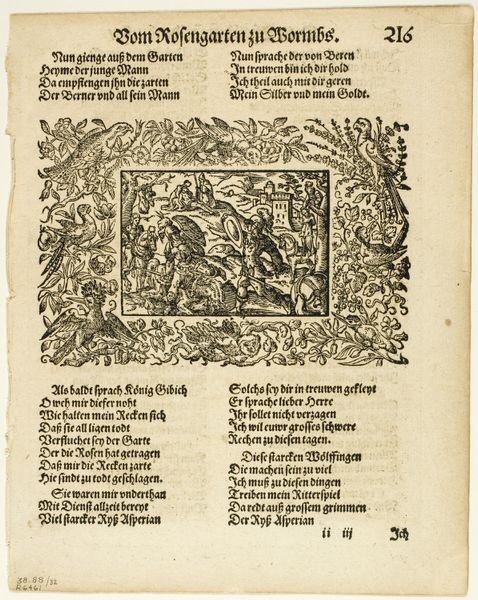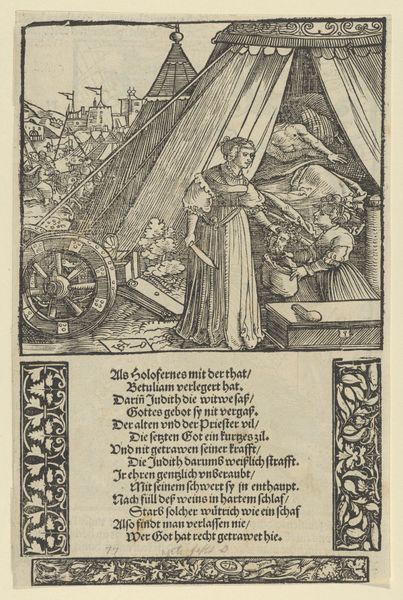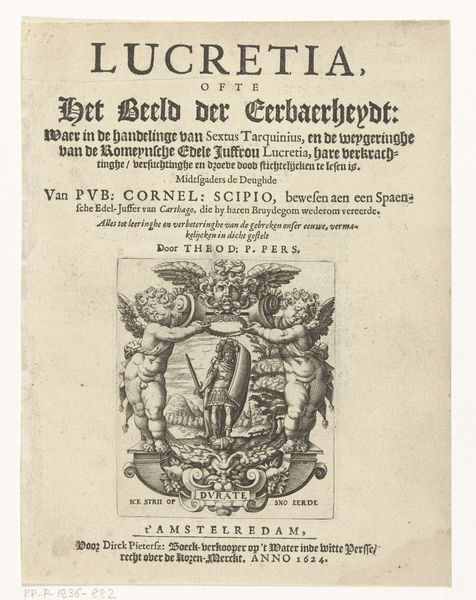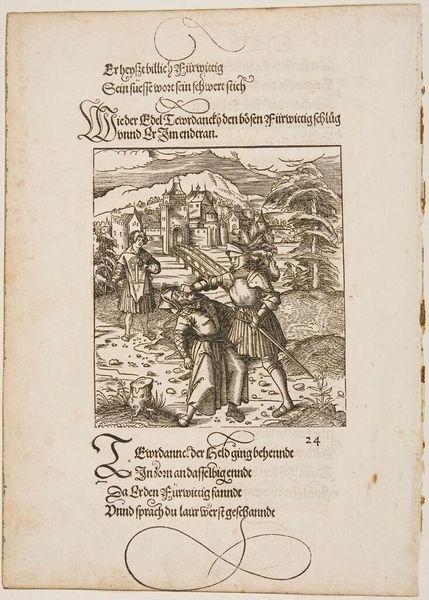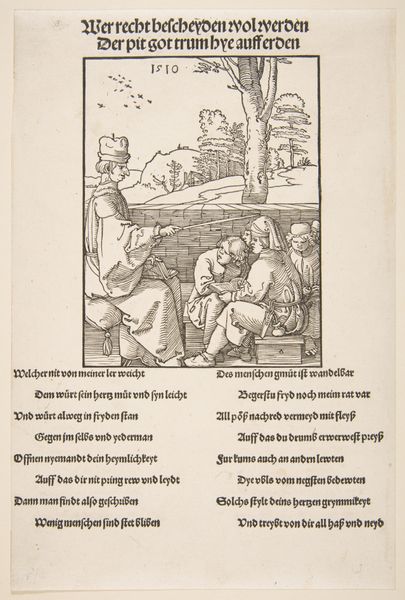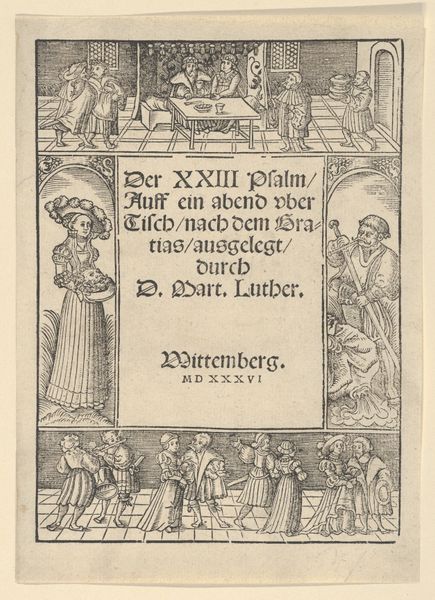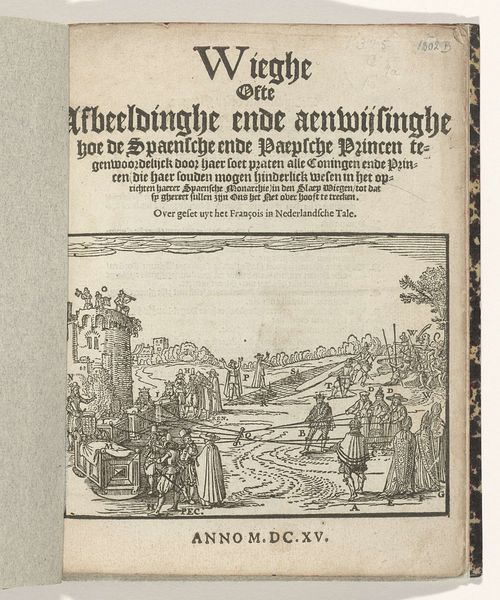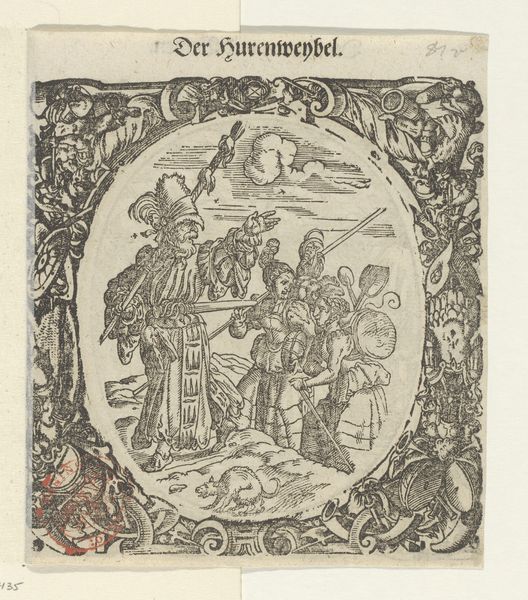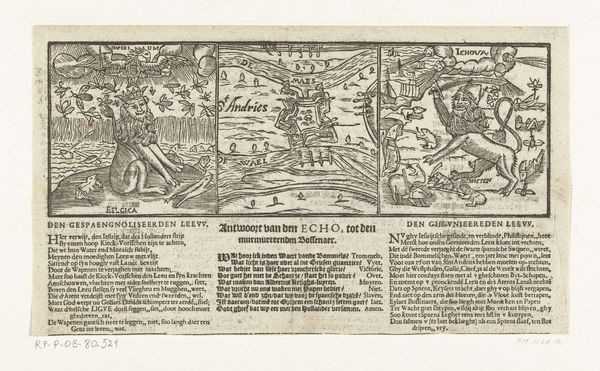
Titelprent van: Opera van Sebastianus Castellio met een vignet van de Hollandse Tuin, 1613 1611 - 1613
0:00
0:00
print, woodcut, engraving
#
narrative-art
# print
#
old engraving style
#
woodcut
#
handwritten font
#
northern-renaissance
#
engraving
Dimensions: height 193 mm, width 145 mm
Copyright: Rijks Museum: Open Domain
Editor: This is the title page of "Opera van Sebastianus Castellio" from 1611 to 1613, currently held at the Rijksmuseum. It's an engraving, and there's a certain somberness in the figures and stark contrast. What stories do you think this image is trying to tell? Curator: The engraving functions as a powerful piece of propaganda, particularly relevant given Castellio's advocacy for religious tolerance. The depiction of the 'sheared wolf' references Castellio’s arguments against religious persecution and his critique of figures like Calvin. This links directly to struggles around intellectual freedom. Where do you see visual hints supporting this theme of persecution and tolerance? Editor: I see the wolf, literally sheared, and a figure fleeing an angry mob on the left… Maybe the trees on each side hint at differing ideals. The landscape in the background almost looks serene, juxtaposed against the chaos. Curator: Exactly! Notice the placement of the 'Inquisition' and 'Spanish Tyranny' inscriptions framing the chaotic scene on the left. How might that commentary position the Dutch Republic? Also consider how visual cues create a counter-narrative highlighting ideals of religious harmony and prosperity of the 'Hollandse Tuin.' It speaks to ideas about Dutch exceptionalism. What underlying power dynamics do you think are in play? Editor: So the image uses the chaos and potential violence to paint the Dutch Republic as a haven, especially compared to other powers? I see that now. It is interesting that, to showcase itself as exceptional, it is making judgements of other cultures and countries…I hadn’t thought about that aspect. Curator: Precisely! These early prints were central to shaping public opinion and constructing national narratives. They weren’t neutral documents. Reflecting on this artwork’s visual language illuminates how it participates in discourses about power, religious freedom, and national identity. Editor: That makes me look at early printed images with completely new eyes. Thank you!
Comments
No comments
Be the first to comment and join the conversation on the ultimate creative platform.
